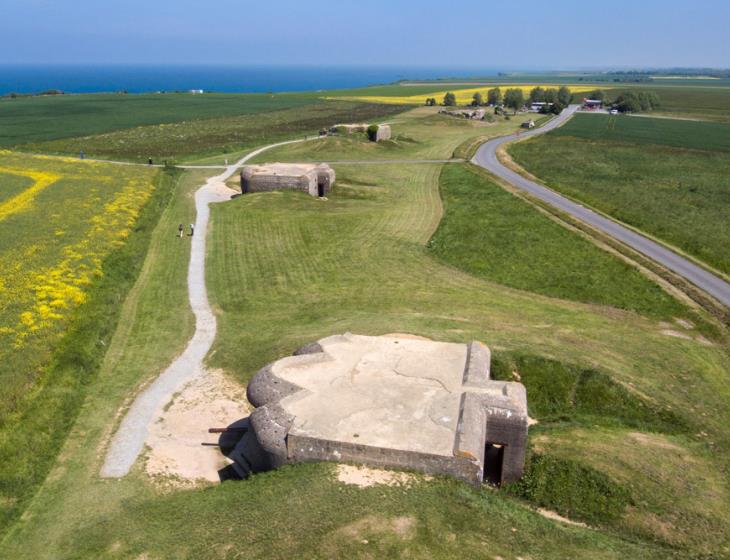Description
This site, property of the Conservatoire du Littoral and managed by the Department of Calvados, is made up of a plateau at an altitude of 65 meters, which is extended by a marl and limestone cliff along the sea. The cliff, by eroding, gives a particular aspect to the landscape by forming chaos (landslide of large blocks of limestone).
Located in the area of the Allied landings in Normandy, between the beaches of Omaha Beach and Gold Beach, the battery of Longues-sur-Mer, built by the Germans, was subjected to intense aerial and naval bombardments which prevented it from being fully in action on June 6, 1944. Thus, it was taken by the British troops the next day. The battery of Longues-sur-Mer is one of the rare batteries of the Atlantic Wall that remained almost in its original state. It consisted of four 150 mm long-range marine guns, each protected by a reinforced concrete casemate, a fire direction station and various installations to serve and defend them.
In the wet depressions, dense thickets are home to giant horsetails and a host of eagle ferns, which fear the dryness of the air. Numerous orchids are also present, as well as a remarkable plant, endemic to Normandy: the whitish senna. This asteraceous grows in altitude. Its leaves and its stem are hairy and silvered. Its flowers are of a very bright yellow which contrasts with the color of the leaves.
As for the fauna, the chaotic nature of the terrain provides unexpected shelter for a number of rare birds: Northern Fulmar, Common Wheatear, Common Whitethroat, Common Yellowthroat, Eurasian Warbler. The presence of chiropterans (bats), such as the Great Mouse and the Stilt-Ear Vespertilion, is confirmed on the site. They use, in particular the blockhouses as place of wintering.
Prices
Services
Opening
Labels & order










